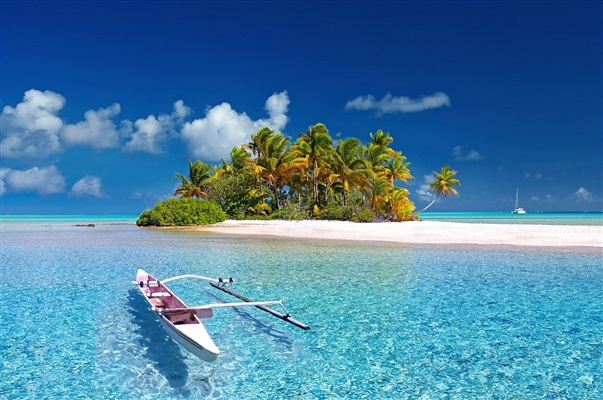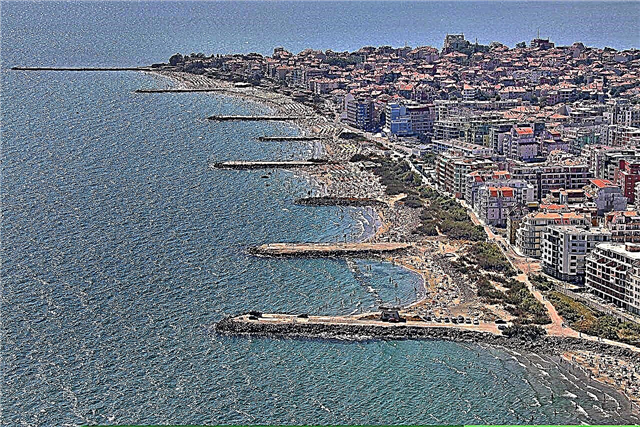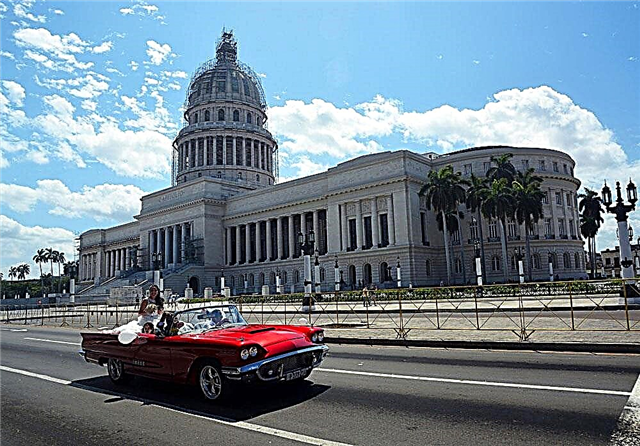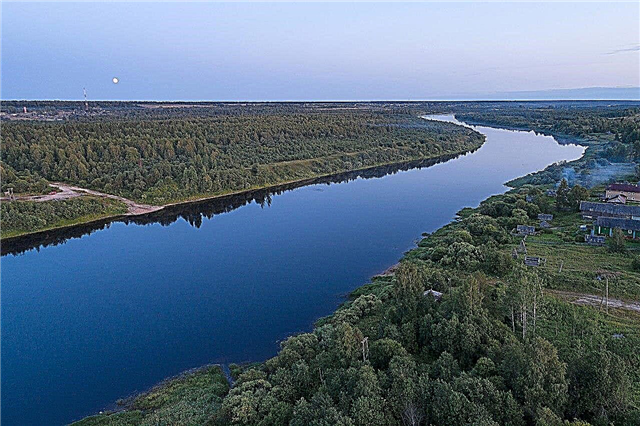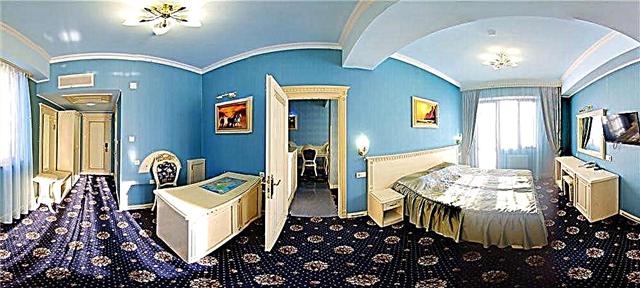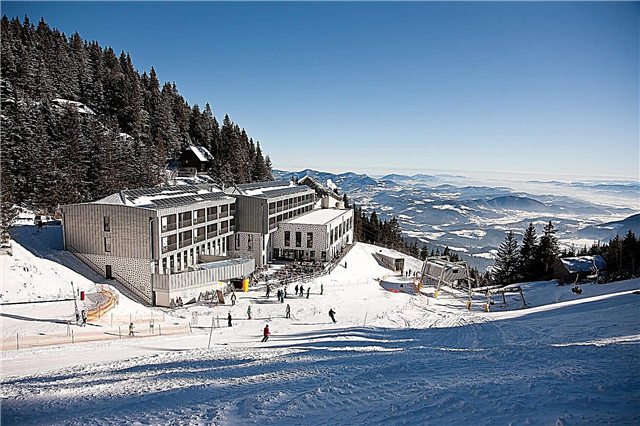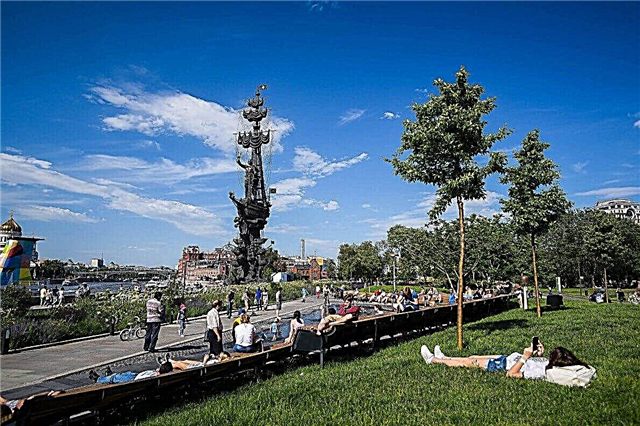In such a huge metropolis like Moscow, people should be able to be alone with nature and take a break from the hustle and bustle. This task is successfully implemented by the numerous parks of the capital, which are located in each administrative district, literally encircling the city's districts and preventing it from turning into a stone jungle.
Green areas are so diverse and different from each other that each deserves a separate visit. Some can be explored for a long time, constantly discovering something new in distant corners. For an aristocratic atmosphere, go to the Hermitage Garden, for ease and creativity - in Gorky Park, for history - in Victory Park, and for entertainment - of course, at VDNKh.
The best parks in Moscow
Zaryadye
In 2017, a natural landscape park of the same name was opened on the territory of the historical district of Zaryadye. American and Russian architectural firms worked together to develop the concept. The project was based on the principles of natural urbanism, in which objects of the urban environment coexist with natural landscapes. At the moment, the main landscape zones of Russia have been created in Zaryadye: tundra, swamp, steppe, forest. It is also planned to complete the construction of the Philharmonic and the hotel. All historical monuments (churches and temples) have been preserved.

Muzeon park
The open-air sculpture museum, designed in the form of a landscape park and located behind the Crimean Bridge near the branch of the Tretyakov Gallery. Its exposition consists of works of art of the 20th century, which are placed in thematic zones. Here you can see the works of V. I. Mukhina, Z. M. Vilensky, E. V. Vuchetich - famous Soviet sculptors, and several hundred statues created by contemporary masters.

Gorky Park
After a large-scale reconstruction in 2011-2012 and the dismantling of old attractions, along with chaotic buildings, the park turned into a creative and well-groomed space, which over time became popular with progressive youth. On weekends, you can see hundreds of people using every conceivable means of transport from bicycles to longboards, sitting on terraces in cafes, strolling along the Moskva River embankment or relaxing on green lawns. In winter, a skating rink works here, exhibitions, concerts and festivities are organized at any time of the year.

Alexander Garden
The park is located in the center of Moscow on the territory of the Tverskoy district, it is closely adjacent to the walls of the Kremlin. First of all, it is interesting for its historical monuments. There is an Italian grotto, an obelisk in honor of the 300th anniversary of the Romanov dynasty, objects dedicated to the Patriotic War of 1812 and, of course, the Eternal Flame with the Tomb of the Unknown Soldier. The main visitors to the Alexander Garden are guests of the capital and foreigners.

Hermitage Garden
The park is located in the area of Karetny Ryad street. There are three theaters on its territory: "Novaya Opera", "Sphere", "Hermitage", as well as the Shchukin stage and an open stage. Since the 19th century, the garden has been a favorite walking place for Muscovites. Today it is an oasis of tranquility in the middle of a bustling metropolis. Park alleys, gazebos, benches are harmonious landscape design objects that look great against the backdrop of historical buildings.

Boring Garden
Once the garden was part of the ensemble of the Neskuchnoye estate, today its territory is part of Gorky Park, making up a single recreational complex with it and the Vorobyovy Gory reserve. There are many architectural monuments in Neskuchny Garden: the rotunda of the mid-18th century, known as the Hunter's Lodge, the Alexandria Palace, the Tea and Wine Houses, built in the 18th-19th centuries.

"Pharmaceutical garden"
The Moscow State University Botanical Garden, one of the oldest in Russia, was founded in the reign of Peter I. It can be visited as part of an excursion, which is more productive than wandering around on your own - the guide will tell you about the plants and show you the most interesting things. Every week in the "Aptekarsky Ogorod" concerts of classical music and folk songs are held, and thematic festivals and exhibitions are also regularly held here.

Victory Park
Another common name for the park is Poklonnaya Gora. It is one of the largest memorial complexes in Russia and the world dedicated to the Great Patriotic War. The main attractions: an obelisk with a height of more than 140 meters - the Victory Monument, a museum, the Church of St. George the Victorious, a memorial mosque and a synagogue (with a Holocaust museum), as well as monuments in honor of soldiers and victims of the war.

Ostankino Park
The territory of the park surrounds the noble estate of the Sheremetyevs and forms a single landscape and architectural ensemble with it. After the reconstruction of 2014, Ostankino returned to its original appearance, as Count Nikolai Petrovich invented it back in the 18th century, but at the same time a modern infrastructure was organized here: bike paths and horse riding trails were laid, sports grounds, a boat station and a dance stage were equipped.

VDNKh
The history of the park began in the 1930s with the organization of a large all-Union exhibition. In Soviet times, VDNKh was a huge ceremonial platform for the country, where the best and the most advanced were demonstrated. Today it is a vast area with themed pavilions, wide promenade alleys, museums, concert and sports grounds, fountains and many entertainment options. The largest oceanarium in Russia operates at VDNKh, an elegantly decorated skating rink opens in winter, light shows and concerts are held in summer.

Tsaritsyno
A magnificent palace and park ensemble in the south of the capital, founded during the reign of Catherine II. Since 1984 it has had the status of a museum-reserve. The architecture of the buildings located on the territory of Tsaritsyno represents Russian Gothic in all its splendor. V. Bazhenov and M. F. Kazakov worked on the projects. The park belongs to the landscape category - in addition to the majestic and picturesque palaces, beautiful bridges, grottoes, cobbled alleys and forest paths have been built here.

Izmailovsky park
Even by Moscow standards, the territory of Izmailovsky Park is quite large - it covers an area of more than 1.5 thousand hectares. It consists of two zones: landscaped park and wild forest. In the first one, all possible entertainments are available to visitors: attractions, cinemas, sports simulators in open areas, bike paths, concert stages, where jazz and classical bands perform in warm weather. In the forest, you can still find forest animals.

Kolomenskoe
A former village near Moscow and a royal residence, which appeared in the 16th century under Vasily III. The Church of the Ascension of the Lord and the Front Gate, built in the 16th-17th centuries, have survived from the eventful past in Kolomenskoye. In 2010, the palace of Alexei Mikhailovich was recreated. The park descends to the picturesque banks of the Moskva River, its promenade paths lie among bright flower beds and trees. Kolomenskoye often becomes a venue for historical reconstructions and ethnographic festivals.

Brateevsky cascade park
The park was founded not so long ago - in 2006 on the territory of the Moskvorechye-Saburovo and Brateevo districts. To do this, they had to fill up a wide artificial bay, plant trees to strengthen the soil, and dress the embankment in granite stone. On the territory of the park there is a pond, a system of alleys, cascading down to the water, and a playground. For residents of the nearest sleeping areas, this place has become the main walking area.

Kuskovo park
The former summer residence of the Sheremetyevs, where magnificent receptions and theatrical performances were held.The architectural and park ensemble of Kuskovo has been perfectly preserved to this day and today visitors have the opportunity to admire classical palaces, pavilions, sculptures and ponds. The main estate (manor house) houses the collection of the Museum of Ceramics with unique exhibits.

Catherine park
The green area is ranked among the monuments of landscape gardening art. It is located in the center of Moscow, not far from Olympic Avenue. The area of the zone is small - only 16 hectares, in the middle there is a pond, on the banks of which there is a Baroque summer pavilion. If you wish, here you can rent a boat and enjoy a boat trip. On the southern side of the park is the Saltykovs' estate.

Sokolniki Park
The name of the park has an interesting history - the fact is that in the 16th-17th centuries there was an impassable thicket here, where the tsars came for falconry. The first paths and glades were laid here in the 18th-19th centuries. Today Sokolniki is a huge sports and entertainment complex, consisting of several zones: walking, nature reserve and historical and cultural. The park often hosts social events: concerts, festivals, celebrations.

Vorontsovsky park
Recreational area in the South-West of Moscow. In the 16th century, these lands belonged to the boyar Vorontsov. Unfortunately, during the Soviet era, the park fell into desolation, many historical buildings were destroyed. After reconstruction in 2006-2007, it was reopened to the public. Of the architectural objects, the exit gates with towers and a greenhouse of the 18th century, the Church of the Life-Giving Trinity and the manor outbuildings deserve attention.

Fili Park
The territory of the park stretches along the floodplain of the Moskva River for 5 km. It appeared in the 1950s on the site of the former villages of Kuntsevo, Fili and Mazilovo. Today it attracts visitors with a picturesque promenade, a landscaped beach and a boat station. Numerous playgrounds are provided for children; adults can admire the Naryshkins' estate, built in the 18th century.

Kuzminki
An extensive forested area in the southeast of Moscow, occupying several urban areas and extending longer to the Moscow region. On the territory of the park there is a complex of manor buildings, consisting of a temple, a horse yard, wings and greenhouses, where museum collections are located. There are many walking alleys and bike paths. The main attraction is the Upper Pond, where it can be quite crowded in warm weather.

N. Tsitsin Main Botanical Garden of the Russian Academy of Sciences
The Moscow Botanical Garden is considered the largest in Europe - its collection contains plants from all over the world - more than 16 thousand species. This is not only an area for scientific research, but also a huge park with elements of landscape design. In 2014, it was merged with VDNKh and Ostankino Park, and the entrance became free. There are many paths and hidden paths in the garden, where you can meet many cyclists in summer and skiers in winter.

Park Krasnaya Presnya
A small park by the standards of Moscow in the Presnensky District, which previously surrounded the noble estate "Studenets". It started working as a public recreation area in the 1930s. Since then, only the Dutch ponds and the fountain have survived. The Empire style bridges were built much later. For visitors to the park, there are electric car and bicycle rental points, a football field, sports and playgrounds.

Terletsky park
The massif is located on the territory of Izmailovo and Perovo. Part of the park has been ennobled and classified as a monument of garden art of the 18th century. In the 1970s, there was still an oak grove here, and the area itself was considered the Moscow region. After the reconstruction in 2007, the most picturesque place was the Terletsky ponds, lying among the green lawns - artificial reservoirs created 200 years ago and refined in accordance with the norms of modern landscape design.

Park of the 50th anniversary of October
A calm and uncrowded place in the south-west of Moscow, where it is pleasant to relax by the banks of a small river and walk among the trees along quiet alleys. There is no such developed infrastructure as in the more famous Moscow parks, but there is everything for solitude and contemplative walks. In the center, where all the walking paths lead, there is an open concert venue.

Park of the 850th anniversary of Moscow
The main green zone of the Maryino district, created in the late 1990s on the left bank of the Moskva River. Among the attractions are the modern monuments to Hans Christian Andersen, the Kind Angel of the World complex and the Lucky Pyatak. Currently, the development of the park continues: the plans include the arrangement of playgrounds, bike paths, the opening of a skating rink and areas for sports.

Lianozovsky park
When Lianozovo was a dacha village in the first half of the 20th century, a park was laid out especially for its residents. After a new district of Moscow grew up here, the green zone continued to fulfill its functions. In 1994, an equestrian club was opened here, in 2008 the Alley of Fairy Tales was created, which was decorated with sculptures of folklore characters, in 2010, after reconstruction, a rope town, a skate playground and a boat station were opened.

Park North Tushino
The territory of the park is located within the area of the same name on the banks of the Khimki reservoir and the Moscow. People are attracted here by beaches, marinas where pleasure boats dock, and long embankments. On the opposite side is the northern River Station. Here you can also look at the museum composition, consisting of a hovercraft, a submarine and an ekranolet ship.

Garden named after N.E.Bauman
The park is located in the Basmanny district of Moscow. It appeared in the 18th century thanks to Prince Golitsyn, who decided to open his garden for free visits. At the beginning of the 20th century, the territory was expanded by joining the parks of neighboring estates. After the restoration of 2012-2013, the place has acquired a well-maintained and modern look. People come here to visit a children's theater or listen to a concert, meet friends in a cafe and bring kids to the playground.

Sparrow Hills
A hilly area in the south-west of Moscow, stretching along the high banks of the river. This is one of the most picturesque places in the city, from where you can enjoy the magnificent panorama of the capital - not for nothing, there is a popular observation deck, which is constantly filled with people. The park has a difficult terrain: going up and down its alleys can get pretty tired, so most visitors prefer to stroll along the embankment.

Elk Island
The national park is right in the heart of the city, where you can meet elk in broad daylight (it's not for nothing that it has such a name). Its vast territory runs along the Yaroslavl highway, reaching Mytishchi and Korolev. It is a great place for cycling, jogging, skiing and other sports. The park looks more like a forest, in some places there are paved alleys and recreational facilities.


